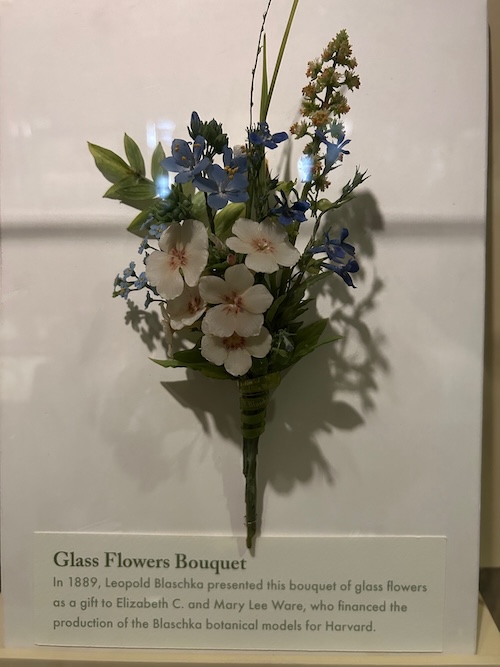Spring Outreach and Harvard Glass Flowers Trip
Spring Outreach Workshop
Thank you to Lauren Huyett for the photos
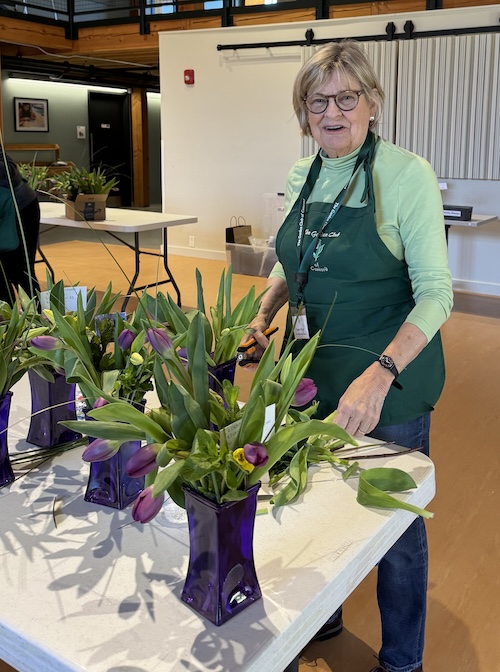 Laurie O’Neill bossing those flowers around!
Laurie O’Neill bossing those flowers around!
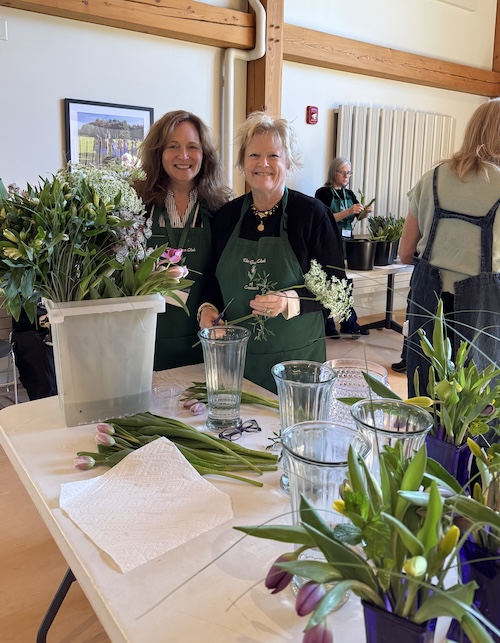 Barbara Kohler and Pam Nelson about to get started
Barbara Kohler and Pam Nelson about to get started
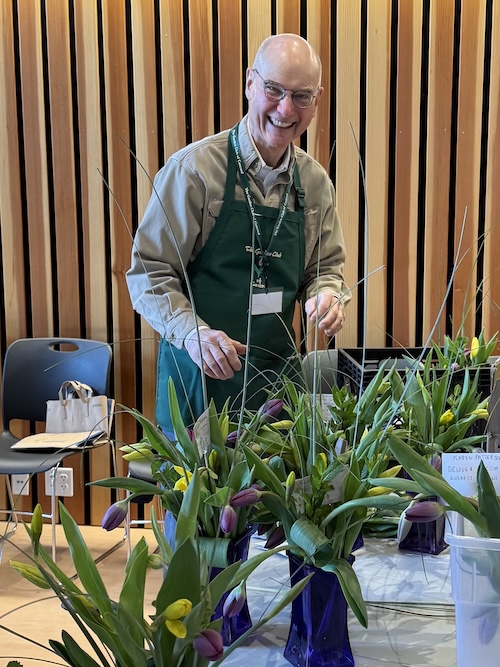 Doesn’t Rod Reidel look happy?
Doesn’t Rod Reidel look happy?
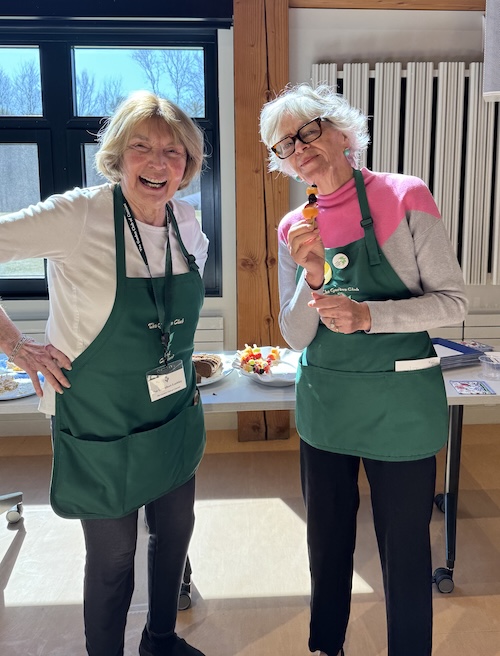 Pat Lescalleet-Lashley and Kate Wharton: such a dynamic duo!
Pat Lescalleet-Lashley and Kate Wharton: such a dynamic duo!
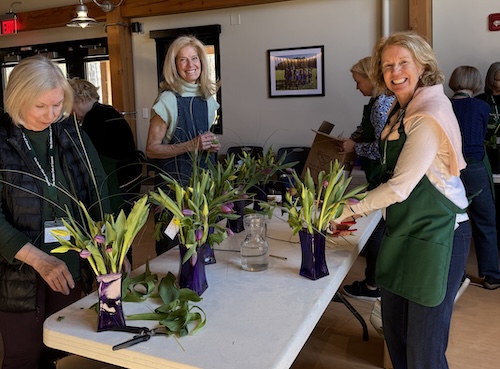 Pat Sinton, Pam Callahan, and Katie Wilson putting on finishing touches
Pat Sinton, Pam Callahan, and Katie Wilson putting on finishing touches
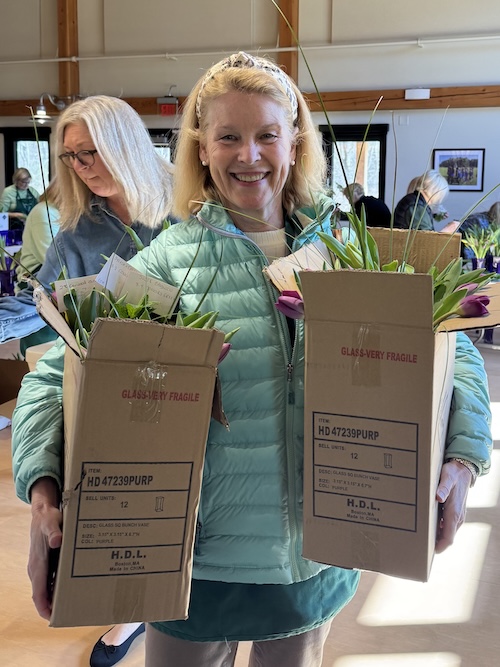 Melinda Shumway loaded up with her finished vases
Melinda Shumway loaded up with her finished vases
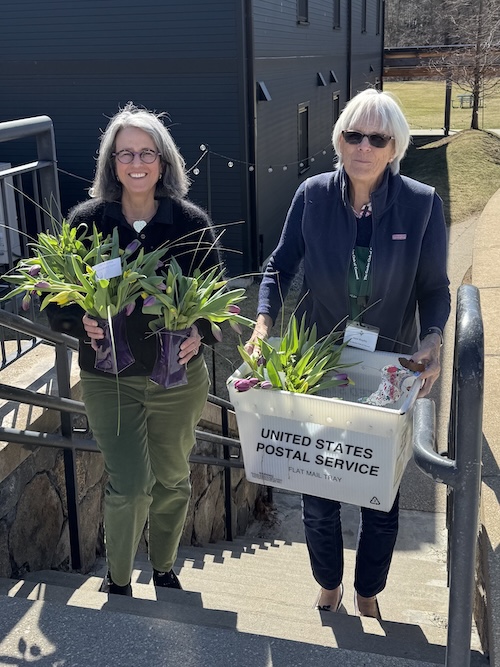 Off they go! Jennifer Stone and Jane Rupley take arrangements for afternoon deliveries
Off they go! Jennifer Stone and Jane Rupley take arrangements for afternoon deliveries
Glass flowers trip
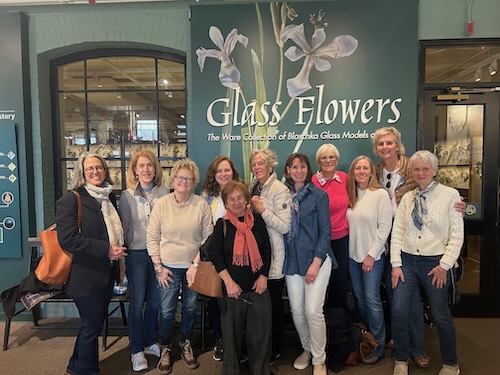 Jennifer Stone, Sally Savelle, Pam Nelson, Barbara Kohler, Joan Campbell, Kate Wharton, Maryrose Sykes, Jane Rupley, Nan Gustafson, Hilary Robinson, Georgine Feldt. Not pictured: Pat Lescalleet-Lashley
Jennifer Stone, Sally Savelle, Pam Nelson, Barbara Kohler, Joan Campbell, Kate Wharton, Maryrose Sykes, Jane Rupley, Nan Gustafson, Hilary Robinson, Georgine Feldt. Not pictured: Pat Lescalleet-Lashley
Maryrose and Nan write: On March 11th, a group of GCC members traveled to Cambridge to admire the impressive Glass Flowers at the Harvard Museum of Natural History. Our docent, David, shared the history and guided us through the exhibit. In 1886, Professor George Goodall, first Director of the Botanical Museum, convinced Leopold and Rudolf Blashka, living near Dresden Germany, to create glass models of plants, and Elizabeth C. and Mary Lee Ware to finance the project, no cost to Harvard University. The Blashkas were previously known for their excellent artistry and workmanship in creating glass sea creatures. They used a tedious process called “bench work” as opposed to glass blowing. Every plant model is clear or colored glass formed on wire, painted in some cases, and then applied with rabbit skin glue to avoid the excessive glass shine. The resulting products are botanically perfect models. Each delicate model is carefully positioned in the display cases. The plants are displayed according to a modern scientific understanding of evolutionary relationships among major plant groups. The collection features 780 different species of flowering and nonflowering plants represented by almost 850 life-sized models and over 3,000 enlargements that detail plant anatomy and morphology. In 2016, the exhibit underwent a renovation resulting in improved lighting, better temperature control and more space for viewing, but fewer plant models displayed. The glass flowers are in bloom all year round, a superb teaching tool and something to enjoy by visitors: “An artistic marvel in the field of science and a scientific marvel in the field of art”.
Before touring The Ware Collection of Glass Models of Plants, our group enjoyed a delicious lunch at the Russell House Tavern in Harvard Square. Lucky for us, the weather was a bonus, sunny and 65 degrees!

